-
Resilience of California’s transportation infrastructure questioned
A significant number of bridges and elevated roadways lie above or close to active fault lines, and Californians often wonder how the state’s towering interchanges and freeway network would perform during a major earthquake.The California Department of Transportation (Caltrans) has spent over $13 billion in the last forty years to reinforce vulnerable bridges and interchanges. Caltrans officials note that during a major earthquake, freeways are likely to sustain significant damage, but engineers feel confident that freeways will not collapse.
-
-
Here’s how to fix America’s crumbling bridges

There are about 600,000 bridges in the United States, and about one in four is classified as functionally obsolete or structurally deficient. This doesn’t mean they’re in danger of imminent collapse; they may be simply too narrow or built for lighter traffic than today’s standards. Bridges that can’t support heavy trucks have weight restrictions posted. There are plenty of repairs that need to be done. With government funding for infrastructure projects being so tight, an alternative has arisen in what are called public-private partnerships, often abbreviated PPP or P3. In this arrangement, private investors assume the responsibility for financing and building a bridge or highway, and the investors are granted the right to collect tolls for what may be decades. The investors naturally believe they will realize a good return on their investment, even after they pay the public partner a sizable sum upfront for the concession. This upfront payment can be in the billions of dollars, which can be very tempting for a state or municipality struggling to balance its budget.
-
-
Upgrading infrastructure could reduce future flood damage
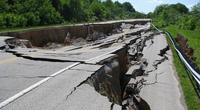
From 1980 to 2007, about 90 percent of all global disasters were caused by flooding either by rain, tsunami, hurricane, or some other natural event. At the same time, the American Society of Civil Engineer’s 2013 Report Card for America’s Infrastructure gave the country a dismal D+. The group said $3.6 trillion was needed by 2020 to address the most serious problems. In Colorado, the report card says, 70 percent of major roads are poor or mediocre and 566 bridges are structurally deficient. A new study argues that the severe flooding that devastated a wide swath of Colorado last year might have been less destructive if the bridges, roads, and other infrastructure had been upgraded or modernized.
-
-
Mapping Florida sinkholes
Sinkholes are common in Florida because of porous rock underground, such as limestone, which holds water. Over time, acid in the water dissolves the rock, creating a void. The Florida Geological Surveyand Florida Department of Emergency Managementare making progress on creating a statewide map showing where sinkholes are most likely to form. Florida received more than $1 million in federal funding last year to conduct a three-year study which would eventually help emergency planners predict where sinkholes are likely to develop, especially after large rainstorms.
-
-
“Smart” rocks detect bridge damage
It is hard to gauge how structurally sound a bridge is when its foundation is buried in a riverbed deep below the water’s surface. New “smart” rocks which are being developed by researchers will give engineers an accurate, easy and cost-effective tool to monitor a bridge’s foundation, in real time. The leading cause of bridge collapse in the United States is scour, an erosion process where water flow carries away river bed deposits and creates scour holes around the bridge pier or abutment. Smart rocks placed at the base of bridge foundations are designed to roll to the deepest point of a scour hole and act as field agents to relay scour depths.
-
-
Number of structurally deficient bridges in U.S. declines
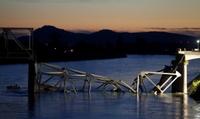
The number of structurally deficient bridges in the United States has declined by 14 percent in the last six years, but despite the improvement, 10 percent of American bridges are in need of maintenance, rehabilitation, or replacement. The average age of bridges in the country is forty-three years old, and most bridges were built to last for fifty-years, so eventually all bridges will become structurally deficient unless they are repaired or replaced.
-
-
Smart infrastructure sensors are powered by the pavement, bridges they monitor

As states look to improve its infrastructure — roads and bridges — researchers think they may have one solution. They are creating smart infrastructure sensors that are powered by the pavement and bridges they are designed to monitor. These small sensors will self-diagnose damage and mechanical failure in pavements and bridges.
-
-
Recession-related cost measures blamed for U.S. infrastructure lagging development
In an alarming fall, the United States is currently ranked 19th in the quality of its infrastructure, according to the World Economic Forum’s Global Competitiveness Report. Additionally, the American Society for Civil Engineers (ASCE) has given the country a D+ on its annual Infrastructure Report Card, arguing that $3.6 trillion is needed by 2020 for maintenance and upgrades.
-
-
Oklahoma worries that fracking-induced earthquakes threaten the state’s bridges
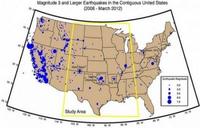
Many residents in Oklahoma are questioning whether hydraulic fracking is to blame for the sudden increase in earthquakes, but for transportation officials, the security of the state’s 6,800 bridges is the immediate concern. There are 468 bridges in Oklahoma which are classified as “structurally deficient,” and most were not built with frequent earthquakes in mind. Earthquakes have become so common, however, that inspectors have had to inspect bridges several times a week.
-
-
Florida moves to protect coastal roads from sea level rise
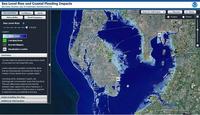
Alton Road is a few blocks west of the Atlantic Ocean, and is Miami Beach’s lowest point, at 2.8 feet above sea level. Trouble is, as a result of sea level rise, inundation tide now routinely reaches 3.4 feet above sea level. Geologist have long warned of the impact sea level rise would have on Florida’s coastal infrastructure, and they view Alto Road as Ground Zero, saying that at some point in the near future, water from flooding will not recede. The Florida Department of Transportation (FDOT) is taking steps to protect coastal transportation infrastructure from sea level rise.
-
-
Helping Kansas counties deal with deficient bridges
Seventy-eight of the 105 counties in the state of Kansas have bridges on low-volume rural roads in dire need of repair, replacement, or removal. With an estimated cost of $150,000 per bridge — and nearly 1,000 bridges across the state in the structurally deficient or functionally obsolete categories — replacement bridges are an expensive proposition. A new study offers a way to determine which bridges should be repaired, and which should be closed.
-
-
Computer simulations help predict blast scenarios
Simulation-based engineering science (SBES) allows researchers to predict the effects of building explosions and analyze the response of building materials to those threats. Using a $400,000, five-year CAREER grant from the National Science Foundation, researchers developed the Material Point Method (MPM) a computer-generated tool which not only creates blast scenarios that informs blast and impact resistant materials and design, but also is crossing over into Hollywood animation — most recently, Disney’s Oscar-winning animated film, “Frozen.”
-
-
Large shake tables expands capabilities of U Nevada, Reno’s quake engineering lab
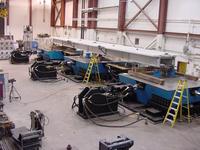
When it opens, the University of Nevada, Reno’s new Earthquake Engineering Laboratoryt will join with the internationally renowned Large-Scale Structures Laboratory to comprise the largest and most versatile structural engineering experimental facility in the United States. Researchers at the facility will conduct research aiming to test new designs and materials that will make buildings, bridges, and highways safer.
-
-
Testing vibration caused by high-speed trains
New high-speed train lines are likely to be built as cities grow, and one problem planners have foreseen is vibrations in the ground caused by trains passing at speed. While these vibrations would probably be too small to damage buildings, they could disrupt the work of buildings such as a hospital by affecting sensitive equipment. Scientists have developed a new model to predict how much a new high-speed railway would shake the ground around it, and the effect this could have on those living near the line.
-
-
Santa Monica to identify, require retrofitting for, quake-vulnerable buildings
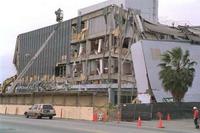
Twenty years ago the city of Santa Monica, California passed laws requiring retrofitting of concrete, steel, and wood apartment buildings which were likely to collapse during an earthquake. The city stopped enforcing the laws a few years after it was passed. Beginning this year, Santa Monica will inspect, and require seismic retrofitting for, concrete, steel, and wood-frame buildings deemed vulnerable during a major earthquake.
-
- All
- Regional
- Water
- Biometrics
- Borders/Immig
- Business
- Cybersecurity
- Detection
- Disasters
- Government
- Infrastructure
- International
- Public health
- Public Safety
- Communication interoperabillity
- Emergency services
- Emergency medical services
- Fire
- First response
- IEDs
- Law Enforcement
- Law Enforcement Technology
- Military technology
- Nonlethal weapons
- Nuclear weapons
- Personal protection equipment
- Police
- Notification /alert systems
- Situational awareness
- Weapons systems
- Sci-Tech
- Sector Reports
- Surveillance
- Transportation
Advertising & Marketing: advertise@newswirepubs.com
Editorial: editor@newswirepubs.com
General: info@newswirepubs.com
2010-2011 © News Wire Publications, LLC News Wire Publications, LLC
220 Old Country Road | Suite 200 | Mineola | New York | 11501
Permissions and Policies
Editorial: editor@newswirepubs.com
General: info@newswirepubs.com
2010-2011 © News Wire Publications, LLC News Wire Publications, LLC
220 Old Country Road | Suite 200 | Mineola | New York | 11501
Permissions and Policies
